
Processing Your Payment
Please do not leave this page until complete. This can take a few moments.
- News
-
Editions
-
- Lists
-
Viewpoints
-
Our Events
-
Event Info
- Women's Leadership Forum 2025
- On the Road with Mainebiz in Bethel
- Health Care Forum 2025
- On The Road with Mainebiz in Greenville
- On The Road with Mainebiz in Waterville
- Small Business Forum 2025
- Outstanding Women in Business Reception 2025
- On The Road with Mainebiz in Bath
- 60 Ideas in 60 Minutes Portland 2025
- 40 Under 40 Awards Reception 2025
- On The Road with Mainebiz in Lewiston / Auburn
- 60 Ideas in 60 Minutes Bangor 2025
Award Honorees
- 2025 Business Leaders of the Year
- 2024 Women to Watch Honorees
- 2024 Business Leaders of the Year
- 2023 NextUp: 40 Under 40 Honorees
- 2023 Women to Watch Honorees
- 2023 Business Leaders of the Year
- 2022 NextUp: 40 Under 40 Honorees
- 2022 Women to Watch Honorees
- 2022 Business Leaders of the Year
-
-
Calendar
-
Biz Marketplace
- News
-
Editions
View Digital Editions
Biweekly Issues
- April 21, 2025 Edition
- April 7, 2025
- March 24, 2025
- March 10, 2025
- Feb. 24, 2025
- Feb. 10, 2025
- + More
Special Editions
- Lists
- Viewpoints
-
Our Events
Event Info
- View all Events
- Women's Leadership Forum 2025
- On the Road with Mainebiz in Bethel
- Health Care Forum 2025
- On The Road with Mainebiz in Greenville
- On The Road with Mainebiz in Waterville
- + More
Award Honorees
- 2025 Business Leaders of the Year
- 2024 Women to Watch Honorees
- 2024 Business Leaders of the Year
- 2023 NextUp: 40 Under 40 Honorees
- 2023 Women to Watch Honorees
- 2023 Business Leaders of the Year
- + More
- 2022 NextUp: 40 Under 40 Honorees
- 2022 Women to Watch Honorees
- 2022 Business Leaders of the Year
- Nomination Forms
- Calendar
- Biz Marketplace
Brunswick rocket-maker’s latest engine test yields key insights
 Screenshot / Courtesy bluShift Aerospace
The burn is fully underway. Like a car engine, the goal is to burn as close to 100% of the fuel with the available oxygen as possible.
Screenshot / Courtesy bluShift Aerospace
The burn is fully underway. Like a car engine, the goal is to burn as close to 100% of the fuel with the available oxygen as possible.
Brunswick aerospace startup bluShift Aerospace’s latest engine test last week, at Brunswick Landing, yielded key insights into next steps for improving fuel combustion.
“Like a car engine, the goal is to burn as close to 100% of the fuel with the available oxygen as possible,” Sascha Deri, bluShift’s founder and CEO, told Mainebiz.
The test was one of a series that helps Deri and his team identify where improvements need to be made. In this case, he said, the test didn’t increase combustion efficiency compared to their last run, but it did yield a much clearer idea of what needs to change to get there.
“That insight is key because better mixing means more thrust and a more stable engine. And that’s exactly where we’re headed,” he said.
To view the test, click here and go to the 51-minute mark.
The right burn
BluShift is the first company in the world to build a rocket engine that runs entirely on a nontoxic, bio-derived solid fuel.
The company has been conducting “full-duration hot fire tests” of its proprietary full-scale Modular Adaptable Rocket Engine for Vehicle Launch, or MAREVL, rocket engine, as the company prepares to use the engine to launch a rocket into a suborbital launch.
Last week’s 62-second burn, including ramp up and ramp down, followed similar scenarios in September and October.

Successful test completions will mean that the engine is powerful enough to propel the company’s suborbital launch vehicle, named Starless Rogue, all the way to space.
After last fall’s tests, the engineering team overhauled the internal working of the engine to optimize the combination of fuel with oxidizer, Deri said during a livestream of the event.
“We’re looking for a nice, clean, stable burn,” he said last week from the test site, where his engineering and technical team were ensconced in a “mission control RV,” as he called it.
The October test showed some instabilities, with sparks flying, and it turned out that some of the liner had started to be incinerated toward the end of the burn, Deri noted.
After last week’s test, he commented that the burn looked cleaner, although still unstable.
Engine architecture
In a follow-up email interview, Deri said the test introduced a new design for the “oxidizer injectors.”
“One of the strengths of our engine architecture is that it allows us to make significant changes to critical subsystems like this quickly and efficiently,” he said. “That’s key when you’re developing new propulsion technology.”
He continued, “With any test, you’re always looking for wins and for ways to improve. In this case, we observed a specific instability mode that persisted throughout the test, something we’ll be digging into further immediately. But we also saw strong signs that another prior instability mode may have been eliminated entirely, which is encouraging.”

The team will be performing a number of injector tests over the next few weeks to address the final instability. The next engine test of the modifications could be in May.
Launch vehicle
Starless Rogue’s design is essentially complete, with minor refinements being made, he said.
But construction is on pause until bluShift completes private capital funding on a $5 million equity seed round.
“With that round complete, we could commence fabrication of the rocket almost immediately,” he said.
The engine tests inform Starless Rogue's design and construction.
“These aren’t just isolated experiments,” he said. “We’re feeding what we learn straight into the evolution of Starless Rogue, though we don't expect many large design changes at this time.”
For example, refinements of the injector design don’t just affect the engine but also cascade into decisions across the entire vehicle.
“If the engine falls just shy of delivering the thrust we’re aiming for, we’ll need to get creative with how we cut weight elsewhere on the rocket to make sure it can still reach space, crossing that critical 100-kilometer threshold,” Deri said.
That could mean removing non-essential sections, swapping metals for lightweight composites, “or my personal favorite — coming up with a completely new, elegant solution driven by the very constraints we’re facing. Constraints like these don’t just box us in — they force us to think beyond the box entirely.”
Launch site
The company has been in talks with the Washington County town of Steuben since 2022 about establishing an offshore launch site and manufacturing facility there.
But last month, voters nixed the proposal, by 264 to 141, when they approved an ordinance to prohibit commercial rocket launches and the establishment of related facilities.
Since then, Deri said, he’s received inquiries from six towns expressing interest in hosting bluShift’s manufacturing operations.
“That said, when we first started conversations in Steuben three years ago, we had a much more aggressive timeline, buoyed by a stronger economy and a fresh wave of momentum,” he continued. “One of the tougher lessons I’ve learned since then is that engaging with communities too early, before we’re truly ready to build, can unintentionally create both excitement and anxiety.
“So going forward, we’re going to be more deliberate. We’ll wait until we’re closer to breaking ground on a mission control or manufacturing site before starting those community conversations. When we do, we want to come not just with vision, but with readiness.”


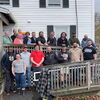


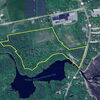
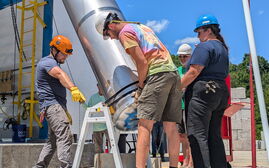

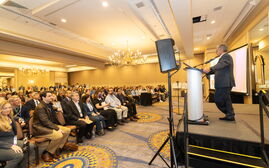


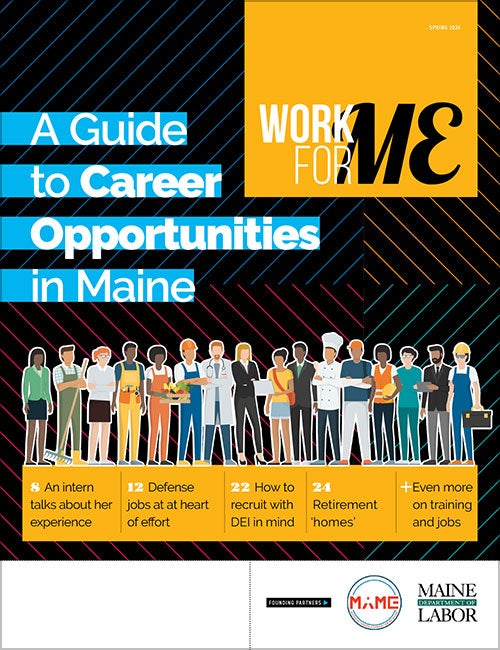


0 Comments